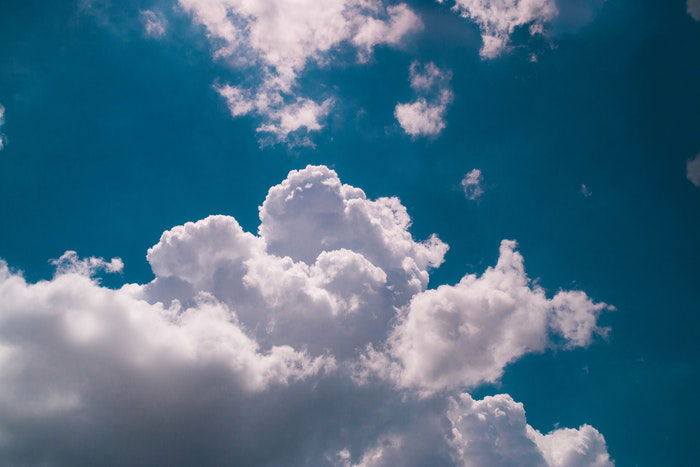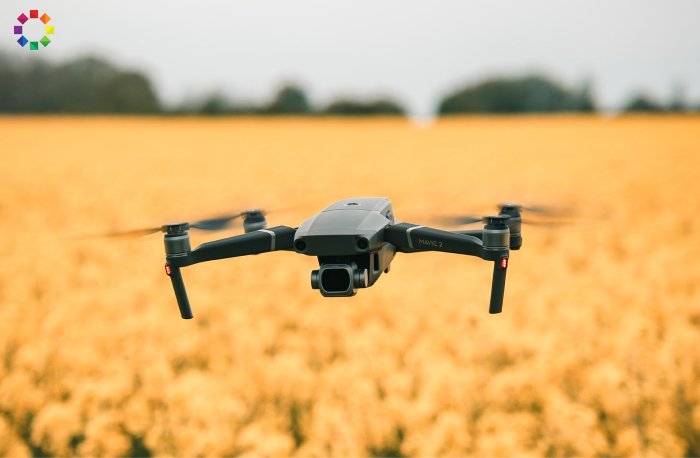Rain photography is an excellent way to add more excitement to a scene, be it street, landscape, macro, or product photography.
Our article will show you a few techniques to take advantage of on a rainy day using texture, composition, and reflections.

15 Techniques for Perfect Rain Photography
Don’t let a rainy day stop you from taking pictures! Get out and try these 15 techniques to improve as a photographer.
1. Choose the Right Equipment for Rain Photography
Having the right equipment is the most crucial aspect of rain photography. You want to protect your camera body, lenses, and yourself.
You will need a waterproof camera case or a rain cover for your camera body. You might also need a weather-sealed lens or waterproof lens hood. A waterproof camera bag and lens cap are also essential when taking rain pictures.
If you’re caught in the rain without this equipment, at least have a plastic bag and wrap it around your gear. And do not forget to pack waterproof clothing and a raincoat for yourself!
A tripod can also come in handy when photographing on a rainy day. Some scenes look better with long exposures, and you must keep your camera steady.
Moreover, rainy scenes look even better at night when all the lights create reflections. A tripod is a must-have item for taking night photos if you don’t use an external flash or light.
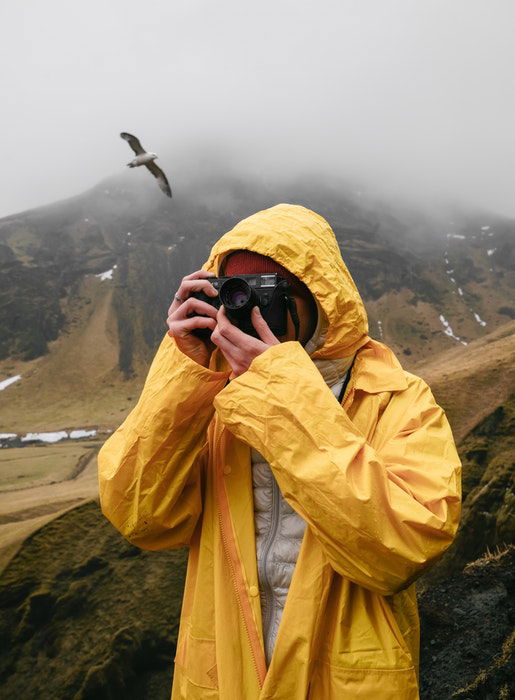
2. Use Juxtaposition for Unique Compositions
Juxtaposition is one of the best compositional rules of photography. You place a subject next to another or in a scene that contradicts the original idea or message.
One way to show great rain photography is to place a subject that would not usually find its place there. Mixing rain and fire, for example, makes for a powerful and symbolic shot.
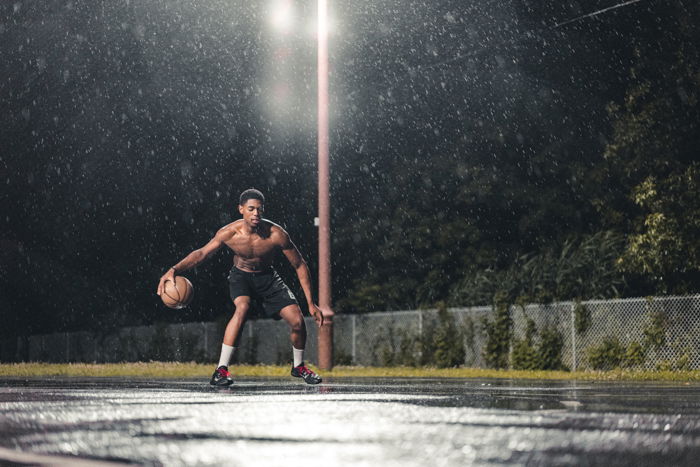
3. Shoot the City Through a Rain-Covered Window
Cityscapes do not have to be picture-perfect. You do not always need traditional correct exposure and the usual composition. Here, you can use rain to show a different side of a city.
The city is in the background and out of focus in our example photo below. The rooftops and buildings are not sharp. Instead, the focus is on the water droplets.
Because of this close-up of the raindrops themselves, the city becomes an impression. It’s a great way to show a place through shape, color, and textures.
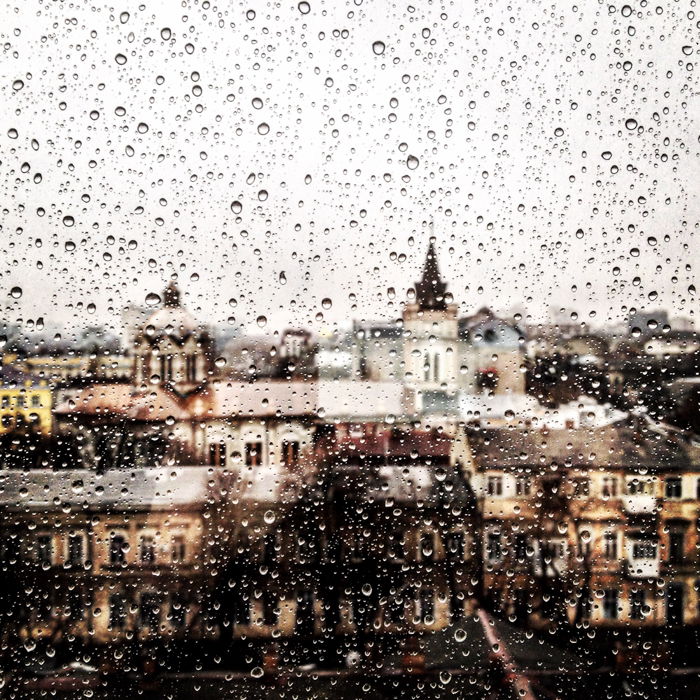
4. Create Portraits With Umbrellas
Umbrellas add shape, form, color, and texture to a photo. On top of this, they add the metaphysical idea of protection.
Umbrellas are also great tools to add narrative to your rain photography. A couple protecting themselves from the rain and the outside world can convey a romantic mood.
They can also be a natural frame for your subject. And you can have an umbrella blocking unattractive areas in your scene. They can also work as very abstract elements in your photo.
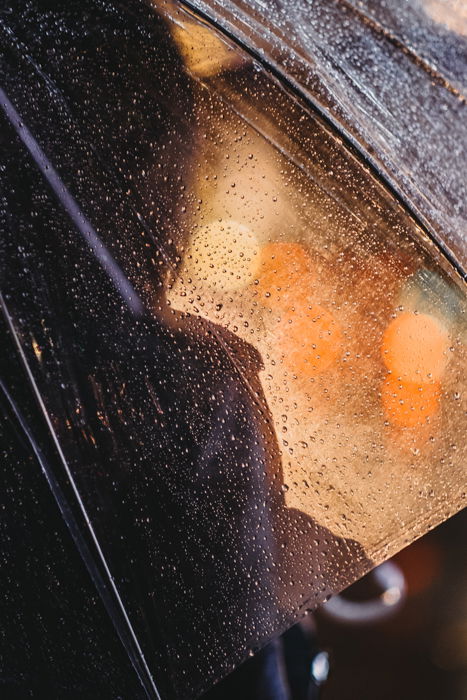
5. Add Texture to Macro Photos with Rain
Macro photography is already amazing, and rain makes a story more interesting. It sets the scene and adds texture to an otherwise drab background.
Macro photography involves wide apertures. This means that the background is completely out of focus. It might show colors, but the rain adds texture.
Grab your best macro lens and try it out. You might even find that some subjects in your scene react differently to the bad weather.
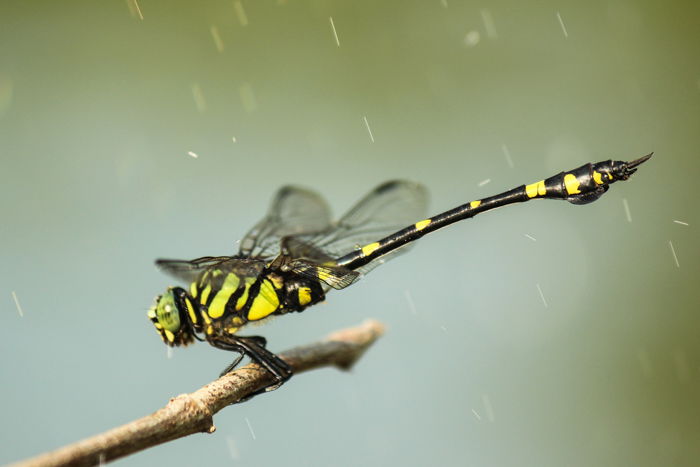
6. Create Unusual Setups for Surprising Product Photography
Product photography balances real situations and those that feel too set up. Using rain brings powerful ideas and connotations to your products.
Rain and splashing water are perfect for a realistic, atmospheric setting. Make sure to use a fast enough shutter speed to capture and freeze the motion of the waterdrops.
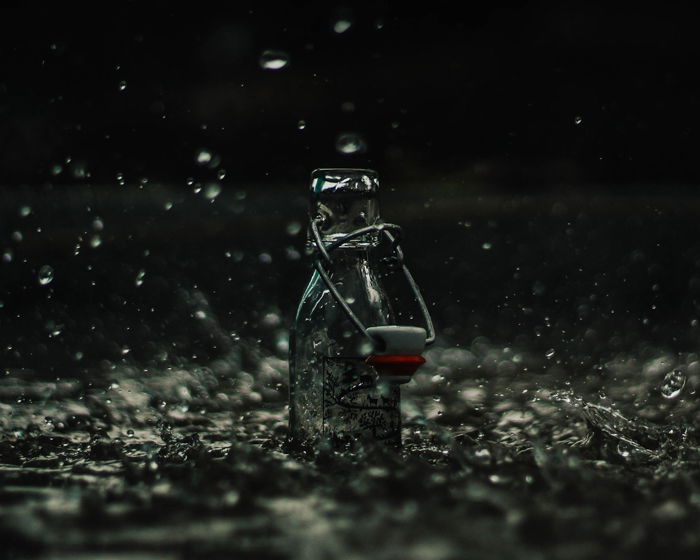
7. Capture Reflections
Rainfall that collects on sidewalks, streets, and roads creates beautiful reflections.
The great thing about reflections is that you get to show two different sides of the same area. You get the texture in the foreground. And buildings, shapes, and forms hang out in the background.
Changing your perspective has a significant effect on your photography. Try photographing reflections from an upside-down perspective.
And rain is the perfect setting for a top-down shot. Reflections in puddles will make the world look upside down. In this way, water functions as a mirror and creates a collage-like effect. So you get two pictures in one.
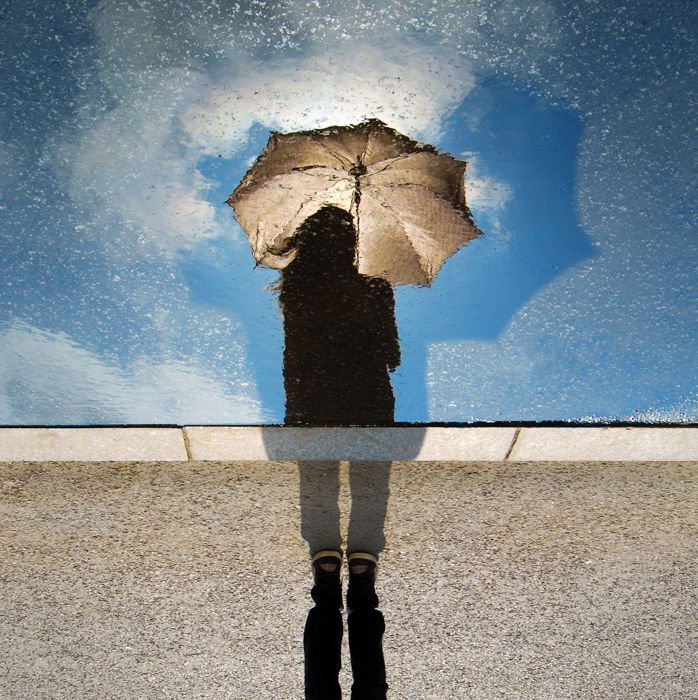
8. Freeze Raindrops
Rain moves so fast. It often appears as slight blurs in the shot. And these dashes of light and texture act as secondary subjects. But if you change your shutter speed, you can make them more important.
A long (slow)) shutter speed allows you to create motion blur. By using a fast shutter speed, you can freeze any movement.
Keep in mind that shooting in the rain causes less intense lighting conditions. So don’t forget to raise the ISO or set a wider aperture for correct exposure and a dramatic shot.
Falling rain becomes heavier, almost glass-like, with a defined shape and form.

9. Shoot in the Rain for Unique Wedding Photos
Wedding photography can all look somewhat similar. After all, there are only so many ways you can pose a happy couple, right? Wrong. You can make unique images by using rain in your shots of the couple.
Take advantage of the romantic nature of rain for some sweet moments. Your clients won’t forget them. But don’t forget to prepare them with appropriate clothing and an umbrella. (And remember to protect your gear, too.)
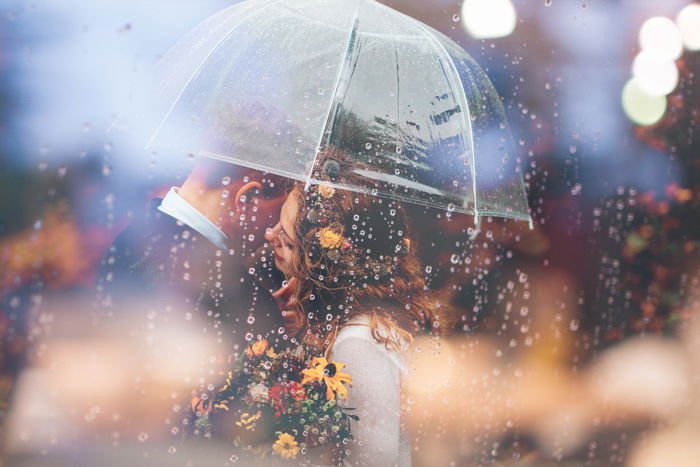
10. Fire a Flash to Highlight Shapes
A flash is a handy device to have in any photo situation. (Read articles on the best Canon flash and best Nikon flash.) And you might need extra light with all the clouds and umbrellas everywhere.
Flashes can help you freeze movement. Without a flash, falling rain is hardly noticeable. But with one, you can make the raindrops stand out as the light reflects back toward the camera. This is why you do not want to use a diffuser on your flash.
By firing a flash, the shape and form of the raindrops become obvious instead of vanishing into obscurity.
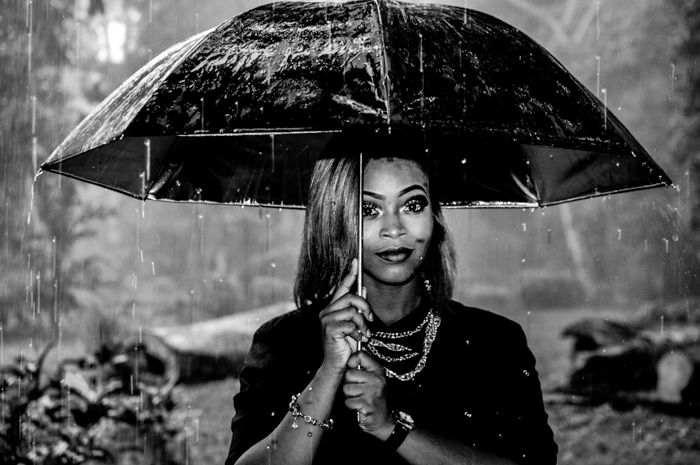
11. Use Rainy Scenes for Creative Abstract Photography
Nothing screams abstract more than rain. We know what we are looking at, but not really.
Try photographing traffic lights through the raindrops on your car window. And see what crazy, interesting shapes you come up with.
You can place the focus anywhere. And by using a wide aperture, you can create bokeh effects in the background.
You can even try to do long exposures with “intentional camera movement” (ICM) and see what kind of surreal photos you get.
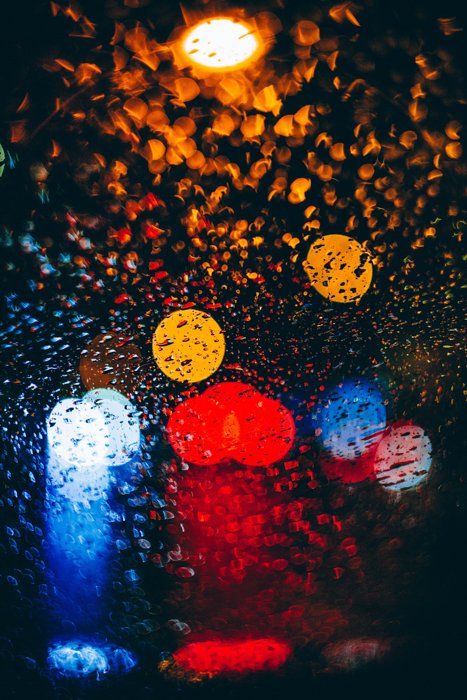
12. Use Condensation for Soft Focus
If the weather is wet and cold outside, you can guarantee the temperature is warm inside. This brings condensation onto anything glass-covered.
This makes street photography more interesting. Now you have a milky scene of mystery in your shot.
You might get a soft focus on your subjects and keep their identity hidden. You can get amazing results in shape, form, and color. In this case, choose your autofocus modes wisely or use manual focus with focus peaking.
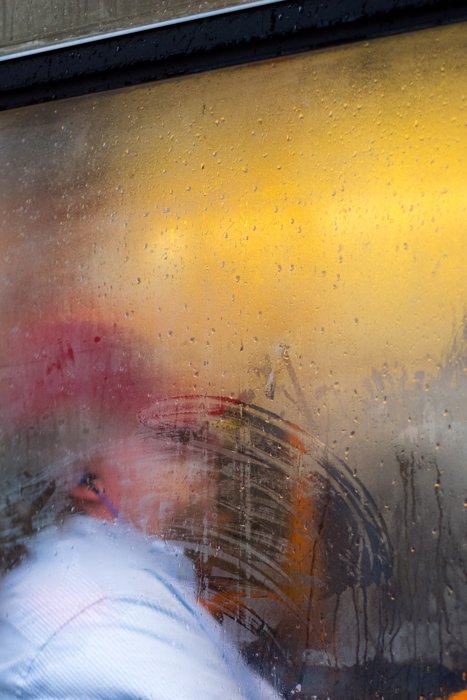
13. Include Dark Clouds for Mood
Rain can have a moody effect on your image. It depends on your scene’s colors, textures, lighting, and angle. But you can capture moody and dark landscapes.
Not all rain clouds are dark, but those can make you feel like the apocalypse is on the horizon. Use this idea to your advantage. Look for areas in your scene that can emphasize this moodiness.
Also, include people in your pictures. Their presence and reactions can enhance the impact of the weather and oncoming rain.
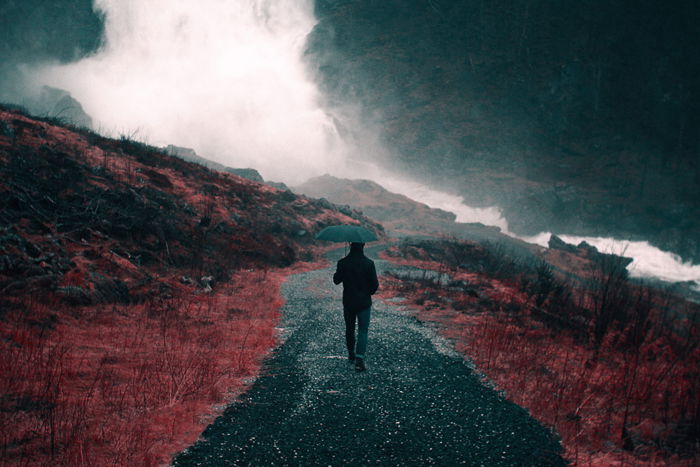
14. Incorporate Shapes and Forms for Unusual Composition
Shapes and forms are two of the simplest yet most important composition tools. Like abstract rain photography, you do not need to document rain factually.
Seeing your scene in a different light or perspective can turn it into something creative.
Get closer to the raindrops to change the idea around them. Or get them to fill more of the frame. And you will find interesting shapes and forms. Using a macro lens, you can even capture reflections inside raindrops!
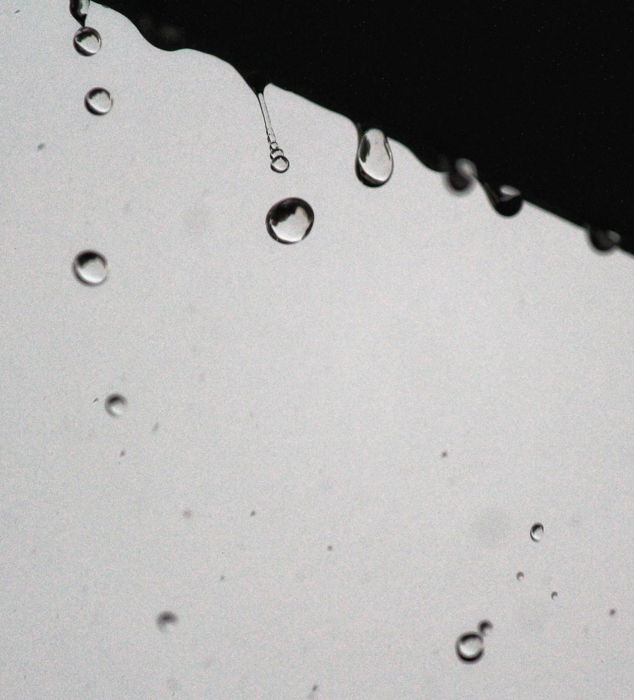
15. Chase a Storm
If you see adverse weather coming your way, do not avoid it. Too many photographers prefer to stay indoors. But extreme weather photography provides a wealth of photo opportunities. Just be safe about it. Don’t put yourself in jeopardy.
Dark clouds add moodiness, and rain adds nostalgia. Together, they make for some striking images. You can also photograph lightning to add even more drama to your images.
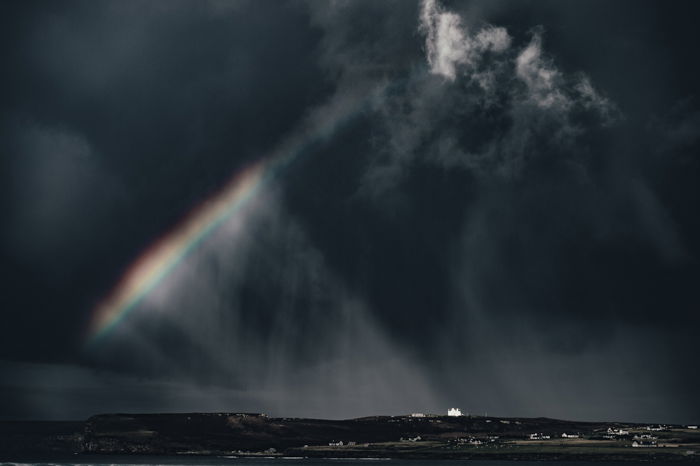
Conclusion: Techniques for Perfect Rain Photography
Next time there is a downpour, do not hide indoors with your camera. Grab it and have some fun in the rain! Just don’t forget to keep your camera dry. Bring your lens hood, a camera bag, and a rain cover. (A plastic bag works in a pinch!) Also, wear a good storm jacket!
Use the 15 ideas from our article to get stunning rain photography. And check out our Shooting Skies course for even more tips on catching amazing photos of ominous rain clouds!

